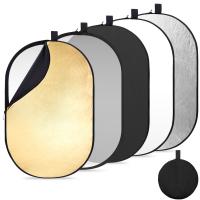How To See Onion Cell In Microscope ?
To see an onion cell under a microscope, you would first need to prepare a thin, transparent slice of the onion tissue. This can be done by peeling off a small piece of the onion and using a sharp blade or scalpel to carefully cut a thin section. Place the section on a microscope slide and add a drop of water to keep it hydrated.
Next, cover the slice with a coverslip to prevent it from drying out and to flatten the tissue. Place the slide on the stage of the microscope and start with the lowest magnification objective lens. Adjust the focus using the coarse and fine focus knobs until the image becomes clear.
Onion cells are typically rectangular in shape and have a distinct cell wall and nucleus. You can observe these structures by moving the slide around and adjusting the focus as needed. If desired, you can increase the magnification by switching to a higher power objective lens to see more details of the onion cells.
1、 Preparation of onion cell slide for microscopic observation
To see an onion cell under a microscope, you will need to prepare a slide for microscopic observation. Here is a step-by-step guide on how to do it:
1. Obtain a fresh onion bulb and peel off a thin, transparent layer from the innermost part of the onion. This layer is called the epidermis and contains the onion cells.
2. Place the onion epidermis on a clean glass slide. Make sure it lies flat and is free from any folds or wrinkles.
3. Add a drop of water to the onion epidermis. This will help to keep the cells hydrated and prevent them from drying out during observation.
4. Gently place a coverslip over the onion epidermis. Be careful not to trap any air bubbles between the slide and the coverslip.
5. Place the prepared slide on the stage of the microscope and secure it in place using the stage clips.
6. Start with the lowest magnification objective lens and focus on the onion epidermis by adjusting the coarse and fine focus knobs. Once the cells come into view, you can switch to a higher magnification lens for a closer look.
7. Observe the onion cells under different magnifications and adjust the focus as needed to get a clear image. You may also want to adjust the lighting using the microscope's diaphragm or condenser to enhance the visibility of the cells.
It is worth noting that advancements in microscopy techniques, such as confocal microscopy and fluorescence microscopy, have allowed for more detailed and precise observations of onion cells. These techniques can provide insights into the cellular structure and function of onion cells at a molecular level.

2、 Adjusting microscope settings for optimal visualization of onion cells
To see onion cells in a microscope, you need to adjust the microscope settings for optimal visualization. Here is a step-by-step guide on how to do it:
1. Prepare a thin slice of an onion. Peel off a small piece of the onion and cut it into a thin, transparent slice using a sharp knife or razor blade. Place the slice on a clean glass slide.
2. Add a drop of water or a staining solution to the onion slice. This will help to enhance the visibility of the cells under the microscope. If using a staining solution, follow the manufacturer's instructions for the appropriate amount and duration of staining.
3. Place a coverslip over the onion slice. Gently lower the coverslip onto the slice, making sure there are no air bubbles trapped underneath. Press down gently to secure the coverslip in place.
4. Set up the microscope. Turn on the microscope and adjust the light intensity to a comfortable level. Start with the lowest magnification objective lens (usually 4x or 10x) and place the slide on the stage.
5. Focus on the onion cells. Use the coarse adjustment knob to bring the onion cells into rough focus. Then, use the fine adjustment knob to sharpen the image. Adjust the diaphragm to control the amount of light passing through the slide.
6. Increase the magnification. Once you have focused on the onion cells at low magnification, switch to a higher magnification objective lens (40x or 100x) to observe the cells in more detail. Refocus as necessary.
7. Observe and record. Take your time to observe the onion cells under the microscope. Look for the characteristic rectangular shape of the cells and the presence of a cell wall and nucleus. You can also take photographs or make drawings to document your observations.
It is worth noting that advancements in microscopy techniques, such as confocal microscopy or fluorescence microscopy, can provide even more detailed and specific information about onion cells. These techniques utilize specialized equipment and staining methods to visualize specific cellular components or processes.

3、 Identifying and locating onion cells on the microscope slide
To see onion cells under a microscope, you will need to follow a few steps:
1. Prepare a microscope slide: Take a thin slice of an onion and place it on a clean microscope slide. Add a drop of water to the slide to prevent the cells from drying out.
2. Add a cover slip: Gently place a cover slip over the onion slice, making sure there are no air bubbles trapped underneath. Press down gently to flatten the onion cells.
3. Adjust the microscope: Place the slide on the microscope stage and secure it in place. Start with the lowest magnification objective lens and focus on the slide using the coarse and fine adjustment knobs.
4. Observe the onion cells: Once the cells are in focus, slowly increase the magnification by switching to higher power objective lenses. Look for rectangular-shaped cells with a distinct cell wall and a large central vacuole. The cell walls may appear as thin, transparent lines, while the vacuole may appear as a dark, empty space within the cell.
5. Take notes or capture images: If needed, take notes or capture images of the onion cells using a camera attached to the microscope. This can help in further analysis or documentation.
It is worth mentioning that advancements in microscopy techniques, such as confocal microscopy or fluorescence microscopy, can provide more detailed and enhanced images of onion cells. These techniques use specific dyes or fluorescent markers to highlight different cellular components, allowing for a better understanding of the structure and function of onion cells.

4、 Observing the structure and characteristics of onion cells
To observe onion cells under a microscope, follow these steps:
1. Obtain a thin slice of an onion. Peel off a small piece of the onion's inner layer, ensuring it is as thin as possible. This can be achieved by using a sharp knife or razor blade.
2. Place the onion slice on a clean glass slide. Add a drop of water to the slide to prevent the cells from drying out and to provide a suitable medium for observation.
3. Gently place a coverslip over the onion slice, taking care to avoid trapping air bubbles. Press down gently to flatten the onion slice.
4. Place the prepared slide on the stage of the microscope and secure it in place using the stage clips.
5. Begin observing the onion cells under low magnification (e.g., 100x) to locate an area of interest. Once located, switch to higher magnification (e.g., 400x) for a more detailed view.
6. Adjust the focus and lighting as necessary to obtain a clear image. Use the coarse and fine focus knobs to bring the cells into sharp focus.
7. Observe the structure and characteristics of the onion cells. Look for the rectangular shape of the cells, the presence of a cell wall, and the large central vacuole. You may also notice the presence of small, dark-stained structures called nuclei within the cells.
From a more recent perspective, advancements in microscopy techniques have allowed for even more detailed observations of onion cells. For example, confocal microscopy can provide three-dimensional images of the cells, allowing for a better understanding of their internal structures. Additionally, techniques such as fluorescence microscopy can be used to label specific components within the cells, such as the cell wall or nucleus, enabling researchers to study their functions and interactions in greater detail. These advancements have contributed to a deeper understanding of the structure and characteristics of onion cells and their role in plant biology.






































